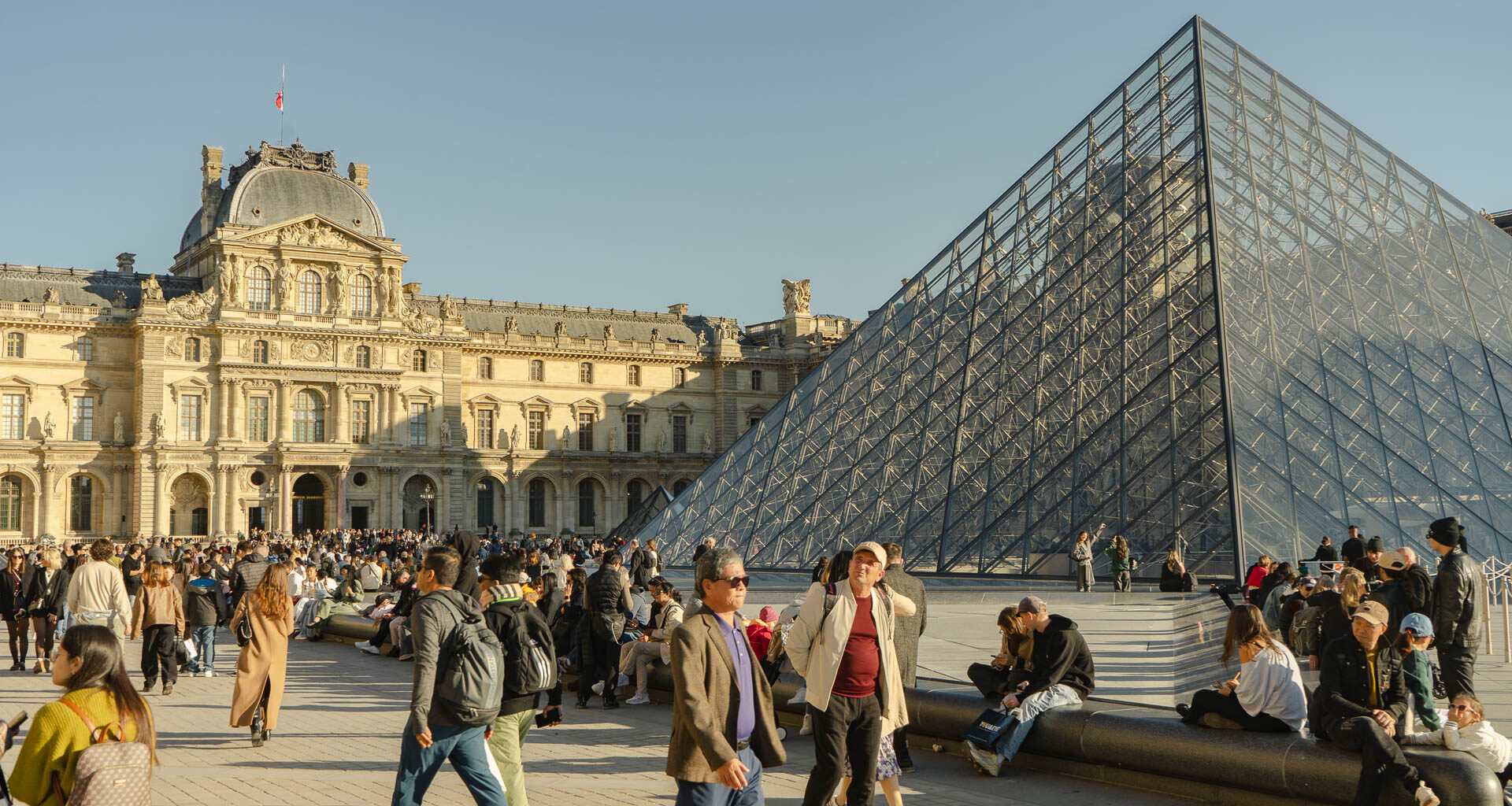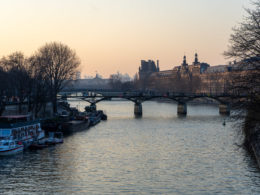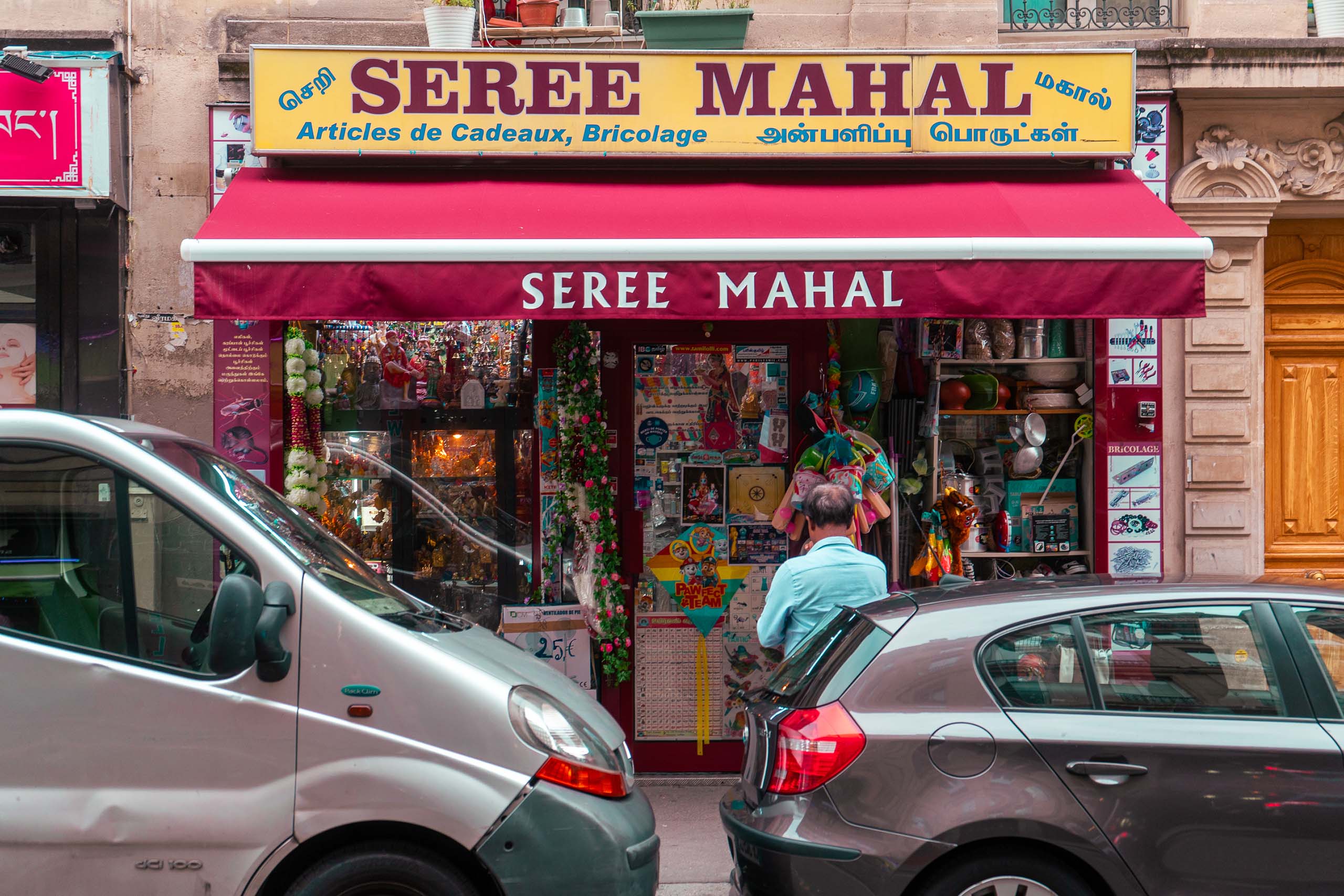The Louvre Museum in Paris is undoubtedly one of the most famous museums in the world. Located in a former royal palace, it’s not just the incredible (and I mean incredible) collection, the museum its self is breathtakingly beautiful.
Its collection is vast and contains Ancient Greek sculptures, Renaissance masterpieces and French Royal artefacts. With a collection spanning over 4,000 years, it has the largest and most extensive collection in the world.

If you’re planning a visit then this guide is for you. I live in Paris and I visit the Louvre numerous times per year. This guide contains everything you need to know about the visiting the museum.
Our Favorite Museum Tours
2 Hour Guided Tour with Reserved Access: This is the best option if you want to use your time efficiently. The 2 hour tour will take you directly to the most famous masterpieces in the museum, tell you more about the their history and the artists.
3 Hour Semi Private Tour: If you want a bit longer in and outside of the museum and prefer smaller groups, this tour is for you. Your expert guide will take you directly to the must-see pieces and give you an experience beyond the audio guides.
What is the Louvre Museum?
The Louvre is one of the largest museums in the world and dates back to the 12th century.
Originally constructed as a fortress in 1190 by King Philippe Auguste to protect Paris, it was later transformed into a royal residence by King François I in the 16th century.
Under François I’s reign, the Louvre became a symbol of Renaissance culture where he acquired some very famous pieces, including the Mona Lisa by Leonardo da Vinci.

By the 17th century, the Louvre shifted from a royal palace to a centre for the arts. Louis XIV relocated the royal court to Versailles, leaving the Louvre to house artists and cultural institutions. In 1793, during the French Revolution, it officially opened as the Muséum Central des Arts, showcasing confiscated royal and church treasures to the public.

Over the centuries, the museum has expanded, including major renovations like the iconic (and at the time, very controversial) glass pyramid entrance designed in 1989.
Today, the Louvre spans over 782,000 square feet and contains more than 380,000 works of art although only 35,000 pieces are actually on display.
How is the Louvre Organised?
The quite frankly huge museum is organised into 3 wings (Richelieu, Sully and Denon) around a central atrium.
The central atrium is located under the stunning glass pyramid. It’s here where you’ll find audioguides, the cloakroom, toilets and access to the 3 wings.

Given the size of the museum and the slightly confusing floorpan I’d advise researching where to go before you visit. It’s also good to know that the 3 wings house a mix of different categories. For example you’ll find French paintings from different eras across all 3 wings – not just in one wing.
There’s a total of are 8 distinct categories that make up the Louvre’s collection:
- Egyptian Antiquities
- Near Eastern Antiquities
- Greek, Etruscan, and Roman Antiquities
- Islamic Art
- Sculptures
- Decorative Arts
- Paintings
- Prints & Drawings

Must-See Pieces
The Mona Lisa
Probably the most famous painting in the world, The Mona Lisa by Leonardo da Vinci isn’t hard to find – just follow the crowds into the Denon wing.
The Mona Lisa, is supposed to have been painted by da Vinci between 1503 and 1506. The subject is believed to be Lisa Gherardini, a silk merchant’s wife from Florence. Considered a masterpiece of the Renaissance, her enigmatic smile and mysterious gaze (that follow you regardless of the viewing angle) are rather incredible.

Amazingly the painting was unfinished and Da Vinci took the portrait with him to France, where it was acquired by King Francis I. It became a prized possession of the French royal collection and has been on display in the Louvre since 1797.
Due to its popularity, the museum has put in place barriers at a distance of over 4m away from the relatively small painting. You’ll also have to queue to get to the front of the barriers and in my experience, visitors are more interested in photos and selfies rather than actually looking at the painting.

Behind the Mona Lisa, there’s an additional information panel (which most visitors don’t see) in English and French. This has some really interesting tidbits of history and commentary on the painting!
Location: Denon Wing – 1st Floor, Room 6
Venus de Milo
The Venus de Milo (AKA the The armless Aphrodite of Milos) is one of the most famous sculptures of ancient Greece.
First discovered in 1820 on the island of Milos in the Aegean Sea, the statue is believed to depict Aphrodite, the Greek goddess of love and beauty (known as Venus in Roman mythology).

The farmer and French naval office who discovered it found the statue in several pieces, and its arms were missing, a detail which still baffles historians.
Attributed to the sculptor Alexandros of Antioch, the Venus de Milo is thought to have been created around 150–125 BCE during the Hellenistic period.
Location: Sully Wing – Ground Floor, Room 7
Winged Victory of Samothrace
The Winged Victory of Samothrace, also known as the Nike of Samothrace, is a masterpiece of ancient Greek sculpture.
Created around 190 BCE during the Hellenistic period, it was discovered in 1863 on the Greek island of Samothrace by French archaeologist Charles Champoiseau. The statue was originally part of a monumental sanctuary dedicated to the gods of the sea and victory.

Carved from Parian marble, the Winged Victory stands approximately 8 feet tall. It was originally found in pieces and its current form is a re-assembly of what was found. Charles Champoiseau revisited the original site numerous times trying to find the head. He was unsuccessful and the sculpture still remains headless.
It was placed in the Louvre in 1884 and has remained at the top of the Daru staircase ever since.
Location: Denon Wing – Ground Floor, Daru Staircase
Practical Information
How To Get There
The Louvre is literally in the very centre of Paris and it’s incredibly easy to get to.
By Bus: You can take buses 21, 27, 39, 67, 68, 69, 72, 74, 85 and 95.
By Metro: You can takes Lines 1 & 7 (Palais-Royal or Musée du Louvre) and Line 14 (Pyramides).
It’s easily walkable from the Champs-Élysées, Le Marais and the Saint Germain des Prés area.
Security Info
There are quick security checks at all the entrances. Bags go through scanners but this takes all but a few seconds. During high season and weekends you’ll find this is where the queuing is.
Note that you can’t take suitcases or large bags past this point. The largest bag
Tickets & How to Skip the Queues
You can buy advanced, timed tickets here.
Note that generally they’re quite flexible in terms of entrance times. If you’re an hour late, you’ll join the queue for the next hour.
If you want to skip the queues the best way to do this is to buy a skip-the-line guided tour. You can reserve these in advance here.
Guided Tours
I love guided tours – I think they’re genuinely the best way to explore a museum if you’re limited on time. You get so much more out of a visit and in a museum like the Louvre, you’ll learn so much.
I’d recommend this 2 Hour Guided Tour with Reserved Access. It’s a fantastic small group tour & advance ticket package. Simply go to the meeting point and the guide will take care of the rest.
If you want a guaranteed smaller, more intimate group visit check out this guided tour.
Cloak Room
The Louvre has one of the best cloak rooms of any museum I’ve been too. There’s over 500 digit-lock secured lockers of various sizes that are free to use.
Simply find a free one, press the ‘C’ button and plug in a 4 digit number (and don’t forget to write it down!). Press the lock button and you’re good to go.

There’s no queuing and it’s super quick – far easier than having to queue for a staffed cloak room!
Where to Eat In the Louvre
The Louvre has a few cafés within the museum. If you want to grab lunch or a drink with a view then Café Marly’s terrace is perfect. Located in the Louvre’s courtyard, right next to the glass pyramid – it’s the spot to take in the atmosphere.

I’ve eaten here once when family were visiting – don’t expect the best food in the city. It’s ok and quite expensive. They’ve changed the menu recently offering more upscale options.
Inside the museum there’s plenty of quick take out options for sandwiches around the central atrium.
Within the Denon wing (right next to the red French paintings room, you’ll find Café Mollien. Here you’ll find coffee, pastries, salads and quiches. In the summer they’ve got a terrace with views across the Louvre’s courtyard.












